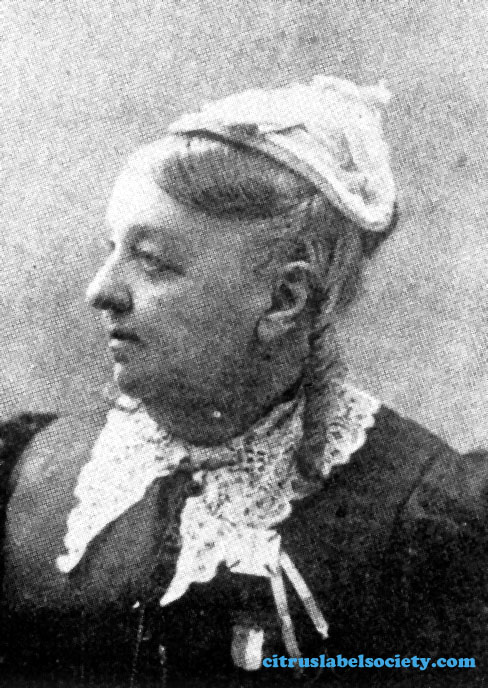 |
|
|
The Washington Navel orange is considered by many to be the very finest
tasting variety of orange. In the mid-1870s it was discovered that this
particular variety of citrus fruit would not only grow well in the Riverside
area, but it would actually thrive in this environment. That discovery
changed the course of citrus growing in California and greatly helped
establish California as the premier producer of top quality eating oranges
for the world. The navel orange industry expanded rapidly, and between
1885 and 1955 thousands of different orange box labels were designed
to promote the sale of this luxury fruit.
The history of how the Washington Navel orange made its way to California
begins with a man named Francis J.C. Schneider (1832-1910). He immigrated
to America from Germany and by 1861 was a Pastor, affiliated with the
Presbyterian Church of the United States. German was his first language,
but he spoke English as well. In the early 1860s, he traveled to Brazil
where he was asked to lead a church attended by German colonists and
other local residents. By the late 1860s, he had settled into a ministry
in Bahia, Brazil.
| |
 |
After moving to Bahia, he became aware of some orange trees that were
growing on Sr. Teixeria’s farm, which was named Engenho Velho.
This farm was located in the suburbs of Bahia, not too far from the
Schneider home. After eating the oranges from Teixeria’s trees,
Schneider decided to write to the United States Department of Agriculture
in Washington D.C. and let them know about the existence of this great
tasting orange with no seeds.
 |
|
|
After receiving a response to his letter, Schneider mailed a box of
twigs from the Bahia orange trees to Washington D.C. for inspection.
William Saunders, the Superintendent of Garden and Grounds for the U.S.
Department of Agriculture, wrote back and stated that the twigs had
dried out in transit and were useless. He went on to say that for any
propagation of this fruit, he would need to receive several small trees
in reasonably healthy condition. Schneider arranged to acquire these
trees and several other citrus varieties from Teixeria’s farmlands.
The trees were carefully boxed and shipped to Washington D.C., as per
Saunders' instructions. They arrived in good condition, and as soon
as they flowered, the buds from the Bahia trees were budded onto healthy
citrus stock that Saunders had ready and waiting. By 1873, Saunders
had a number of small navel orange trees growing.
| |
 |
That year, Saunders was asked to send a few of these trees, budded
to the Bahia orange variety, to the Luther and Eliza Tibbits homestead
in Riverside, California. This was an experiment to see if this variety
would grow in the soil and climate of California. The Tibbits were grain
farmers, not fruit farmers, and although they were clearly the ones
who requested the trees and had them shipped to Riverside, they had
no idea of how to properly plant and care for them.
Fortunately, when the trees arrived, three horticulture enthusiasts
named George Garcelon, Josiah Cover and Samuel McCoy were there to help.
The trees were carefully planted in the Tibbits front yard and were
cared for by Cover and McCoy, who owned a fruit farm and nursery across
the street from the Tibbits farm.
 |
|
|
When the trees flowered, Cover and McCoy took buds and budded them
onto mature orange trees they had growing in their orchard. As a result,
Cover and McCoy actually had a mature crop of Bahia Navel oranges, before
the Tibbits. Within two years it was obvious that this variety grew
extremely well and produced outstanding oranges. The Tibbits started
a business selling buds from their trees, while Cover and McCoy developed
the world’s first commercial grove of Bahia Navel oranges.
That is the story of how the Bahia variety of navel orange was introduced
to the California commercial citrus industry. Settlers in Riverside
began promoting this variety as the Riverside Navel orange, but by the
late 1880s, horticulturists settled on the name Washington Navels as
a tribute to them coming to California from Washington D.C. William
Saunders thought they should have been called Bahia Navels, but Washington
Navels is the name that stuck and is still being used today.
Primary Sources:
- Thirty-Ninth Annual Report, Board of Foreign Missions of
the Presbyterian Church, April 30, 1876.
- Pacific Rural Press, San Bernardino County Notes, June 1897.
- Department Bulletin #445, United States Department of Agriculture,
Washington D.C., February 10, 1917.
|
